Images
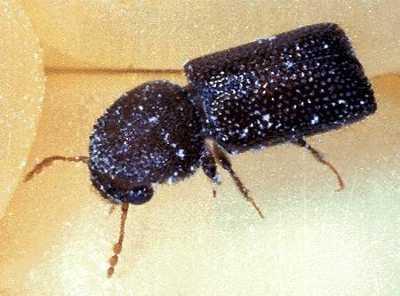
© NRI/MAFF. Reproduced from the Crop Protection Compendium, 2004 Edition. © CAB International, Wallingford, UK, 2004
|
Larger grain borer (Prostephanus truncatus). The adult beetle is 3-4.5 mm long.
|
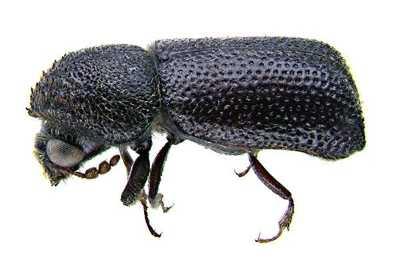
© Georg Goergen/IITA Insect Museum, Cotonou, Benin. Reproduced from the Crop Protection Compendium, 2004 Edition. © CAB International, Wallingford, UK, 2004
|
Larger grain borer (Prostephanus truncatus).
Adult beetle, 3-4.5mm
|

© Georg Goergen/IITA Insect Museum, Cotonou, Benin. Reproduced from the Crop Protection Compendium, 2004 Edition. © CAB International, Wallingford, UK, 2004
|
Larger grain borer (Prostephanus truncatus).
Adult beetle, 3-4.5mm
|
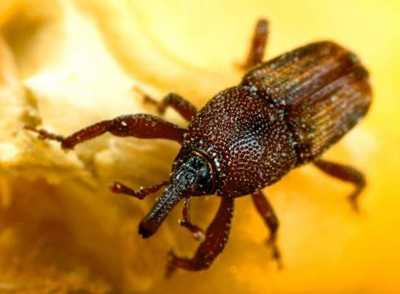
© Georg Goergen/IITA Insect Museum, Cotonou, Benin. Reproduced from the Crop Protection Compendium, 2004 Edition. © CAB International, Wallingford, UK, 2004
|
Larger grain borer (Prostephanus truncatus).
Adult beetle, 3-4.5mm
|

© Georg Goergen/IITA Insect Museum, Cotonou, Benin. Reproduced from the Crop Protection Compendium, 2004 Edition. © CAB International, Wallingford, UK, 2004
|
Larger grain borer (Prostephanus truncatus).
Adult beetle, 3-4.5mm
|
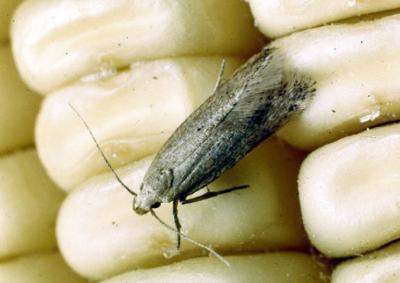
© Georg Goergen/IITA Insect Museum, Cotonou, Benin. Reproduced from the Crop Protection Compendium, 2004 Edition. © CAB International, Wallingford, UK, 2004
|
Larger grain borer (Prostephanus truncatus).
Adult beetle, 3-4.5mm
|
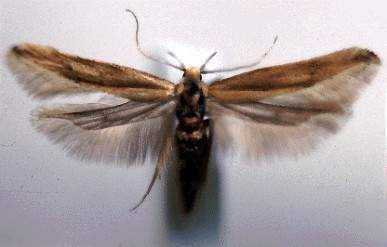
© Georg Goergen/IITA Insect Museum, Cotonou, Benin. Reproduced from the Crop Protection Compendium, 2004 Edition. © CAB International, Wallingford, UK, 2004
|
Larger grain borer (Prostephanus truncatus).
Adult beatle, 3-4.5mm
|

© Georg Goergen/IITA Insect Museum, Cotonou, Benin. Reproduced from the Crop Protection Compendium, 2004 Edition. © CAB International, Wallingford, UK, 2004
|
Larger grain borer (Prostephanus truncatus).
Adult beetle, 3-4.5mm
|
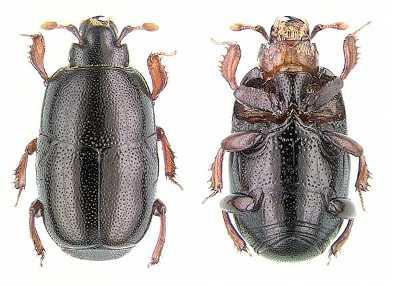
© Courtesy EcoPort (http://www.ecoport.org): Georg Goergen
|
Predator of LGB (Teretrius nigrescens). Initial releases of T. nigrescens were in Togo in 1991 and in Kenya in 1992. In both countries it became well established and spread. Subsequently, there have been predator releases in Benin, Ghana, Tanzania and Malawi. Only in the case of Tanzania does it appear that there has been any difficulty in the predator becoming quickly and easily established. However, despite the successful introductions, there are still regular outbreaks of P. truncatus and farmers still suffer losses. It has been concluded by Holst et al. (2000b) that T. nigrescens does not offer a good example of classical biological control but as the predator is able to reduce the density of the pest it is considered that it has, nevertheless, a role to play in integrated pest management.
|
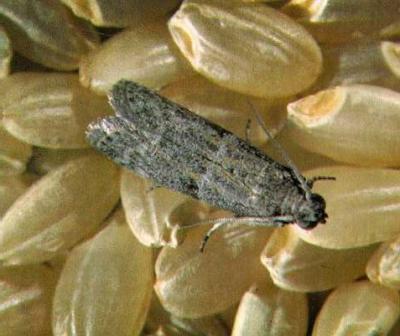
© Courtesy EcoPort (http://www.ecoport.org): Georg Goergen
|
Predator of LGB (Teretrius nigrescens). Initial releases of T. nigrescens were in Togo in 1991 and in Kenya in 1992. In both countries it became well established and spread. Subsequently, there have been predator releases in Benin, Ghana, Tanzania and Malawi. Only in the case of Tanzania does it appear that there has been any difficulty in the predator becoming quickly and easily established. However, despite the successful introductions, there are still regular outbreaks of P. truncatus and farmers still suffer losses. It has been concluded by Holst et al. (2000b) that T. nigrescens does not offer a good example of classical biological control but as the predator is able to reduce the density of the pest it is considered that it has, nevertheless, a role to play in integrated pest management.
|

 Back
Back